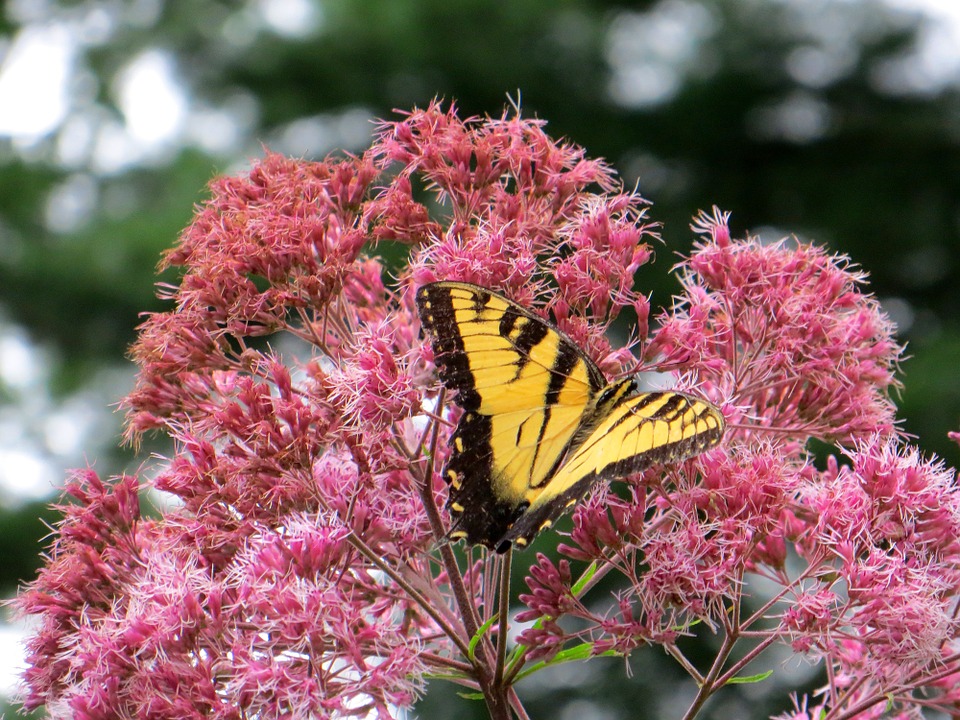Blog

#bioPGH Blog: Wild About Wildflowers
 A resource of Biophilia: Pittsburgh, #bioPGH is a weekly blog and social media series that aims to encourage both children and adults to reconnect with nature and enjoy what each of our distinctive seasons has to offer.
A resource of Biophilia: Pittsburgh, #bioPGH is a weekly blog and social media series that aims to encourage both children and adults to reconnect with nature and enjoy what each of our distinctive seasons has to offer.
Isn’t it amazing how just a simple trek in the outdoors can stay with you for weeks? Last week, my hike on a portion of the Rachel Carson trail brought us the story of pileated woodpeckers—this week, it’s time to talk flowers. Pennsylvania has a wide variety of native wildflowers that add splashes of color to forests, meadows, and our gardens. Also, with many of our wildflowers, there is often more to them than meets than eye. Let’s explore!
Rue Anemone
The quest to explore wildflowers was inspired by a flower that I had never seen before: the rue anemone. This anemone isn’t a squishy home to a lost clownfish, though! Spotted in a wooded area along the Rachel Carson trail near Hampton Township Park, this little wildflower may be a picture of delicate beauty, but it has quite a few surprises up its leaves. First, the rue anemone can be tricky to identify because its petals can range in color from a light pink shade to white, and the flowers can have anywhere from five to ten petals—only those aren’t actually petals. The rue anemone is particularly interesting because its “petals” are actually sepals—the modified little leaves that normally comprise the outer portion of the flower bud (on a blooming flower, the sepals look like tiny dried leaves underneath the flower. Another little surprise about this flower: rue anemone doesn’t have nectar. It still attracts some pollinators with its shape and color, but the seeds are actually dispersed by ants on the forest floor. Ants may be most noticed for the roles at our picnics, but seed dispersal is actually a quite important job they do.

Once you begin learning about native wildflowers—especially when imagining a native plants garden—it’s hard to stop! Here are a few more beautiful native Pennsylvania wildflowers, all of which are already adapted to our climate. If you’re planning a trip to a local nursery to get your own native garden started, keep a look out for any of these wild ones!
Virginia Bluebell
The native habitats of these beauties are forests near water sources or in moist ground. In your garden, they are perfect for that shady, damp corner of your yard. Virginia bluebells are native throughout all but the southernmost of eastern North America. But be warned—these wildflowers are known to attract those most distracting of tiny creatures—hummingbirds!

Black-eyed Susan
A fascinating concept about a black-eyed susan is that each “flower” is actually hundreds of flowers! The dark center of the flower is comprised of densely-packed disc florets, and each “petal” is actually a ray floret. flower, and they do well if you are planting your own wildflowers in a sunny part of the garden.

Joe-Pye-Weed
Another lovely Pennsylvania wildflower— often surrounded by Pennsylvania butterflies—is the joe-pye-weed. This meadow flower can grow to be five to seven feet tall, and is very showy with pink-purple flowers. For local gardeners, an added bonus is that joe-pye-weed is deer-resistant!

Mountain Laurel
It would be a travesty not to mention the Pennsylvania state flower as a beauty of our hills! Mountain laurel is a shrubby evergreen commonly found in oak and pitch pine forest. In our state, it remains a large shrub, but it is known to grow forty feet tall farther south, such as in Tennessee. You won’t have to worry about that, here, though! When maintained in a garden, it can be pruned to a manageable height. This is also a great shrub for a garden that is shaded but has well-drained soil.

Nature dreams up the most stunning of plants all on its own—be sure to keep native wildflowers in mind as you begin gardening. Native plants are always a much better choice than introduced (link back to invasives post), and they make a bright beautiful garden to boot! Check out this list of local nurseries to get your spring garden blooming!
Connecting to the Outdoors Tip: Different species of wildflowers have different flowering times. Check out this list of native plants to find out when you can keep your eyes open for your favorite blooms!
Continue the Conversation: Share your nature discoveries with our community by posting to Twitter and Instagram with hashtag #bioPGH, and R.S.V.P. to attend our next Biophilia: Pittsburgh meeting.
Resources
DCNR PA iConserve: Plant Smart
National Park Service: Mountain Laurel
Lady Bird Johnson Wildflower Center: Thalictrum thalictroides
Illinois Wildflowers: Rue Anemone
Photo Credits: Rob Dubas, Fritz Flohr Reynolds CC-BY-SA-3.0, GrassRootsGroundWell CC-BY-2.0, Heidi Maria CC0, Aaron Carlson CC-BY-SA-2.0

